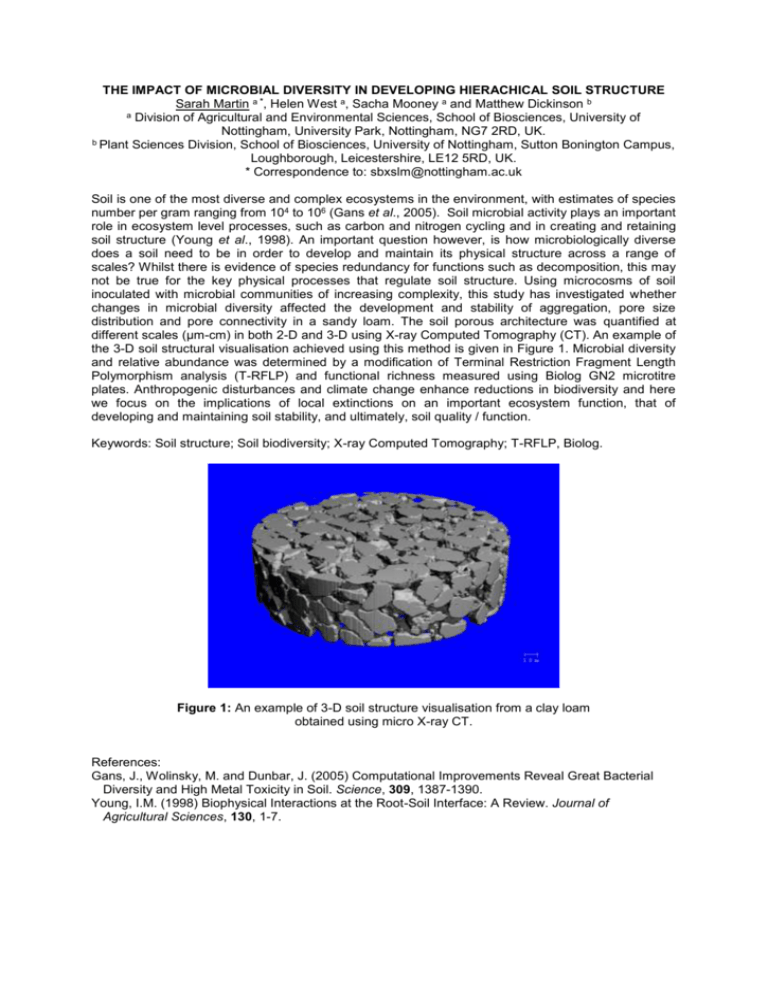THE ROLE OF SOIL BIODIVERSITY ON SOIL STRUCTURE
advertisement

THE IMPACT OF MICROBIAL DIVERSITY IN DEVELOPING HIERACHICAL SOIL STRUCTURE Sarah Martin a *, Helen West a, Sacha Mooney a and Matthew Dickinson b a Division of Agricultural and Environmental Sciences, School of Biosciences, University of Nottingham, University Park, Nottingham, NG7 2RD, UK. b Plant Sciences Division, School of Biosciences, University of Nottingham, Sutton Bonington Campus, Loughborough, Leicestershire, LE12 5RD, UK. * Correspondence to: sbxslm@nottingham.ac.uk Soil is one of the most diverse and complex ecosystems in the environment, with estimates of species number per gram ranging from 104 to 106 (Gans et al., 2005). Soil microbial activity plays an important role in ecosystem level processes, such as carbon and nitrogen cycling and in creating and retaining soil structure (Young et al., 1998). An important question however, is how microbiologically diverse does a soil need to be in order to develop and maintain its physical structure across a range of scales? Whilst there is evidence of species redundancy for functions such as decomposition, this may not be true for the key physical processes that regulate soil structure. Using microcosms of soil inoculated with microbial communities of increasing complexity, this study has investigated whether changes in microbial diversity affected the development and stability of aggregation, pore size distribution and pore connectivity in a sandy loam. The soil porous architecture was quantified at different scales (μm-cm) in both 2-D and 3-D using X-ray Computed Tomography (CT). An example of the 3-D soil structural visualisation achieved using this method is given in Figure 1. Microbial diversity and relative abundance was determined by a modification of Terminal Restriction Fragment Length Polymorphism analysis (T-RFLP) and functional richness measured using Biolog GN2 microtitre plates. Anthropogenic disturbances and climate change enhance reductions in biodiversity and here we focus on the implications of local extinctions on an important ecosystem function, that of developing and maintaining soil stability, and ultimately, soil quality / function. Keywords: Soil structure; Soil biodiversity; X-ray Computed Tomography; T-RFLP, Biolog. Figure 1: An example of 3-D soil structure visualisation from a clay loam obtained using micro X-ray CT. References: Gans, J., Wolinsky, M. and Dunbar, J. (2005) Computational Improvements Reveal Great Bacterial Diversity and High Metal Toxicity in Soil. Science, 309, 1387-1390. Young, I.M. (1998) Biophysical Interactions at the Root-Soil Interface: A Review. Journal of Agricultural Sciences, 130, 1-7.






